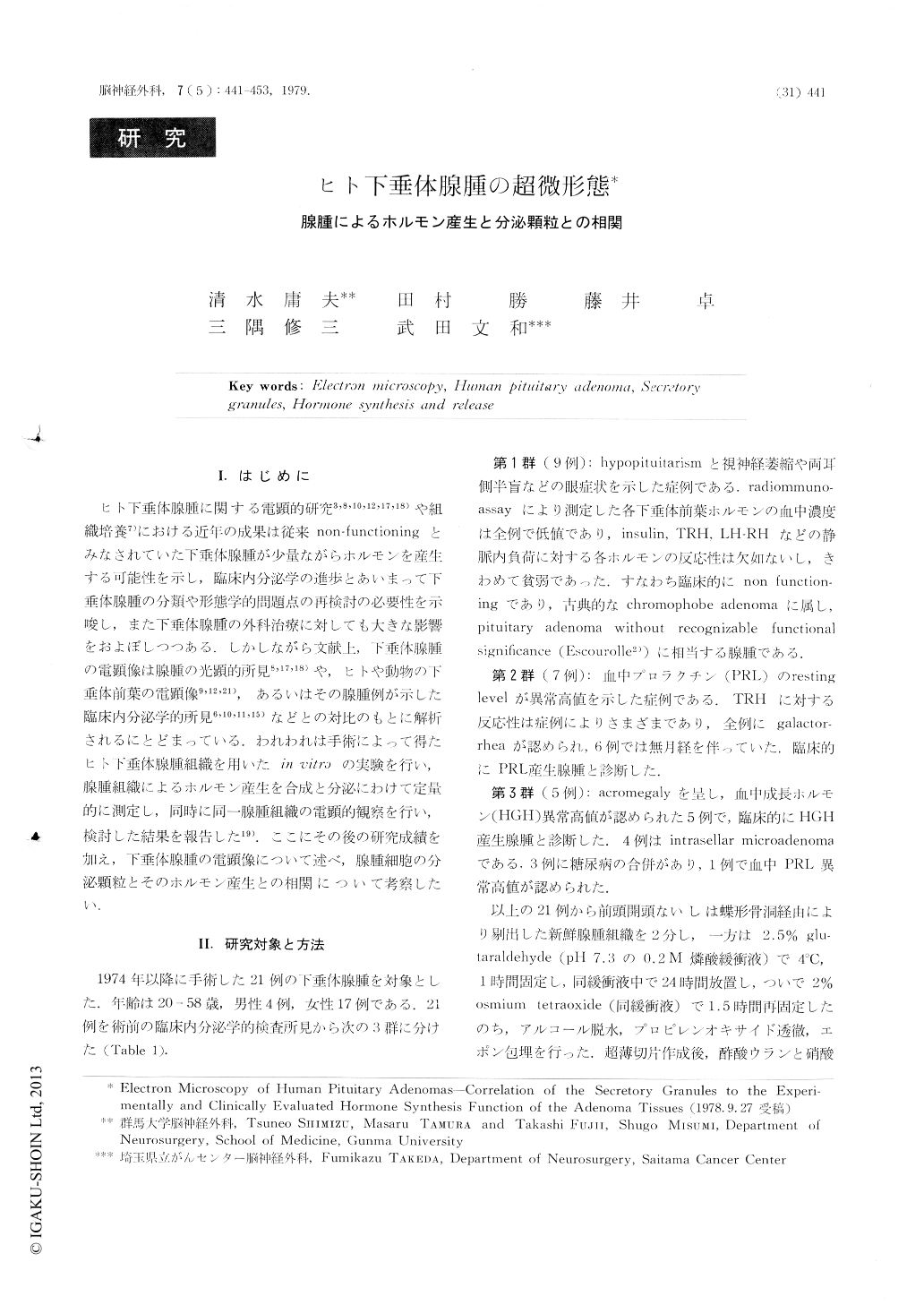Japanese
English
- 有料閲覧
- Abstract 文献概要
- 1ページ目 Look Inside
Ⅰ.はじめに
ヒト下垂体腺腫に関する電顕的研究3,8,10,12,17,18)や組織培養7)における近年の成果は従来non-functioningとみなされていた下垂体腺腫が少量ながらホルモンを産生する可能性を示し,臨床内分泌学の進歩とあいまって下垂体腺腫の分類や形態学的問題点の再検討の必要性を示唆し,また下垂体腺腫の外科治療に対しても大きな影響をおよぼしつつある.しかしながら文献上,下垂体腺腫の電顕像は腺腫の光顕的所見8,17,18)や,ヒトや動物の下垂体前葉の電顕像9,12,21),あるいはその腺腫例が示した臨床内分泌学的所見5,10,11,15)などとの対比のもとに解析されるにとどまっている.われわれは手術によって得たヒト下垂体腺腫組織を用いたin vitroの実験を行い,腺腫組織によるホルモン産生を合成と分泌にわけて定量的に測定し,同時に同一腺腫組織の電顕的観察を行い,検討した結果を報告した19).ここにその後の研究成績を加え,下垂体腺腫の電顕像について述べ,腺腫細胞の分泌顆粒とそのホルモン産生との相関について考察したい.
Ultrastructural features of the secretory granules of human pituitary adenomas obtained at correlation with the clinical features and abilities of the tumor tissue to synthesize and release growth hormone (HGH) and prolactin. These abilities were measured quantitatively, isolating the hormones by polyacrylamide gel disc electrophoresis after in vitro labeling of the hormones with 14C-leucine.
According to the preoperative signs, symptoms and endocrinological findings, the patients were classified into following 3 groups: In group I (adenoma without recognizable functional significance), 8 cases showed clinical signs of pituitary hypofunction and occular symptoms. Each anterior pituitary hormone conentration in plasma was low as compared with of normal humans.

Copyright © 1979, Igaku-Shoin Ltd. All rights reserved.


